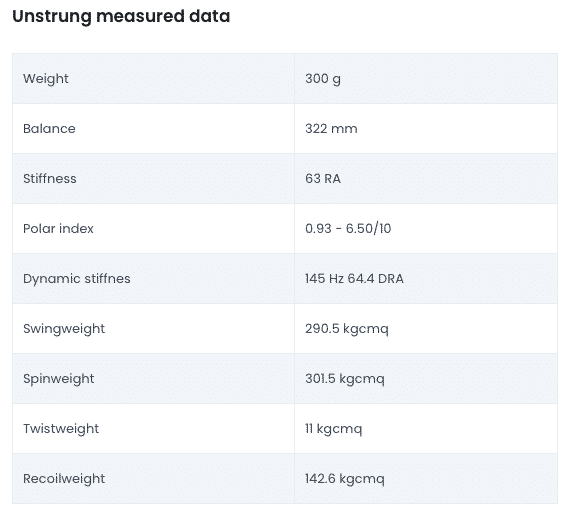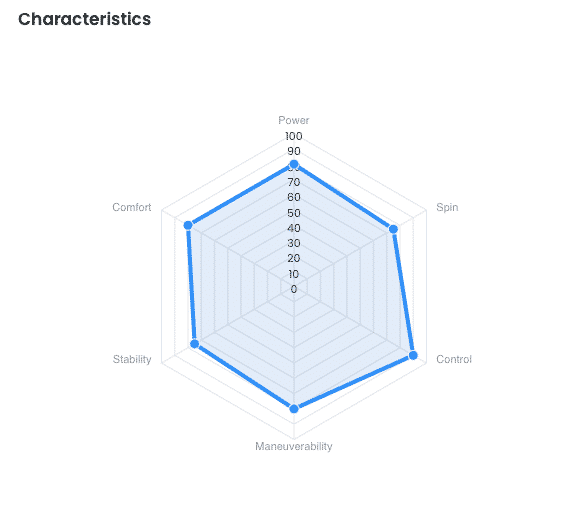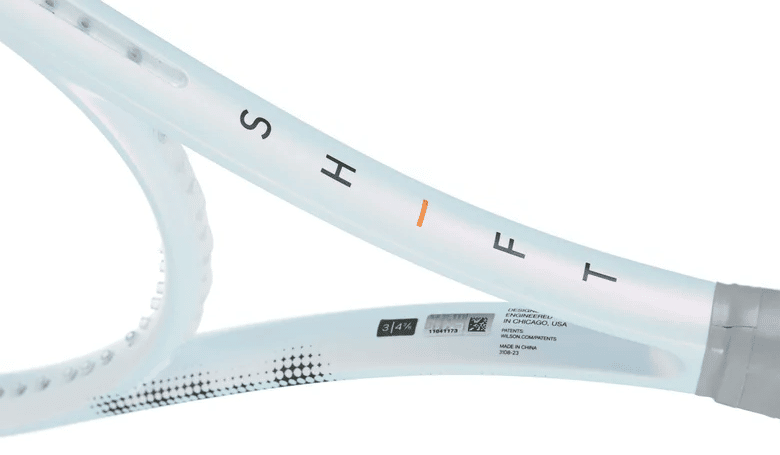Lab analysis
98″ (630sqr inch) plate on a typically symmetrical 16×19 pattern in pure Wilson style.
The laboratory data in terms of inertia of the frame highlight not excessive values of Swingweight (SwW) with 290kgcmq per not strung racket which are destined to become on average 315kgcmq per strung racket. A step back from the past in search of better modulation, handling and ease of play.
The Spinweight (SpW) value of 301.5kgcmq allows to obtain a TwW stability figure of 11.5kgcm completely in line with 98 ″ plate racquets of the same rank. Also in this case excellent handling and attitude for maximum ease of acceleration and variation (obviously referring to competitive rackets…).
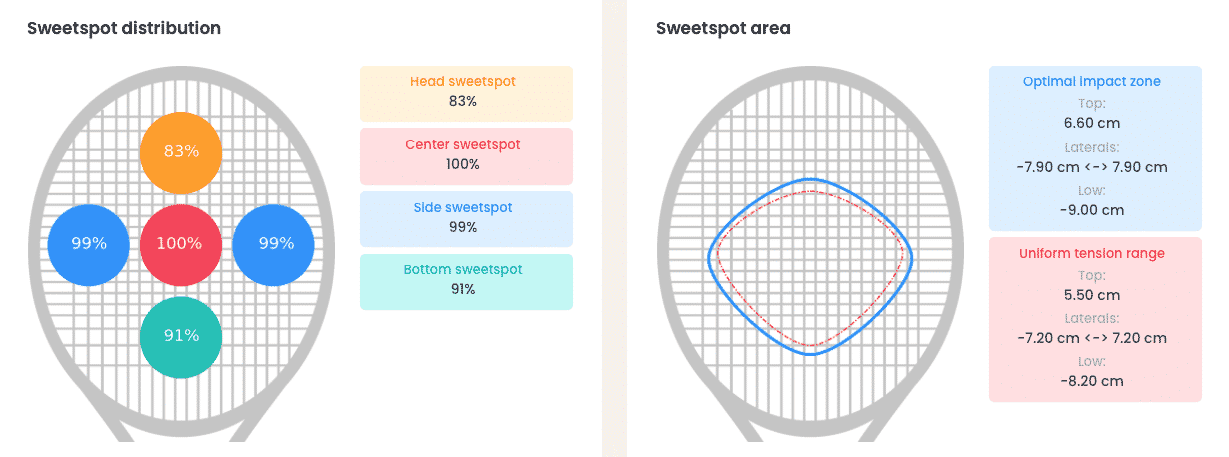
It is interesting to note that the racket has a substantially moderate inertia in relation to balance and weight, and that therefore the propensity adopted in the past to the maximum polarization of the masses has been set aside due to the search for greater progressiveness and ease of play.
The analysis of the flexibility curves returns a flexibility figure equal to 63-64RA with a bare racket which is lowered to 60-61RA when the racket is strung, also due to the carbon fiber braided 45° pattern, which is appreciably affected by the action transmitted by the strings on the frame.
The flexibility of the stem is concentrated on the lower part which results in percentage terms, the one where the greatest overall flexion is concentrated (90% of the loss of flexural inertia is concentrated in the part of the stems). The flex is constant for the upper part of the stem to ensure maximum stability of the oval but the effects of the progressivity of the stems will certainly be felt on the court during the game phases, transmitting a very special feeling.
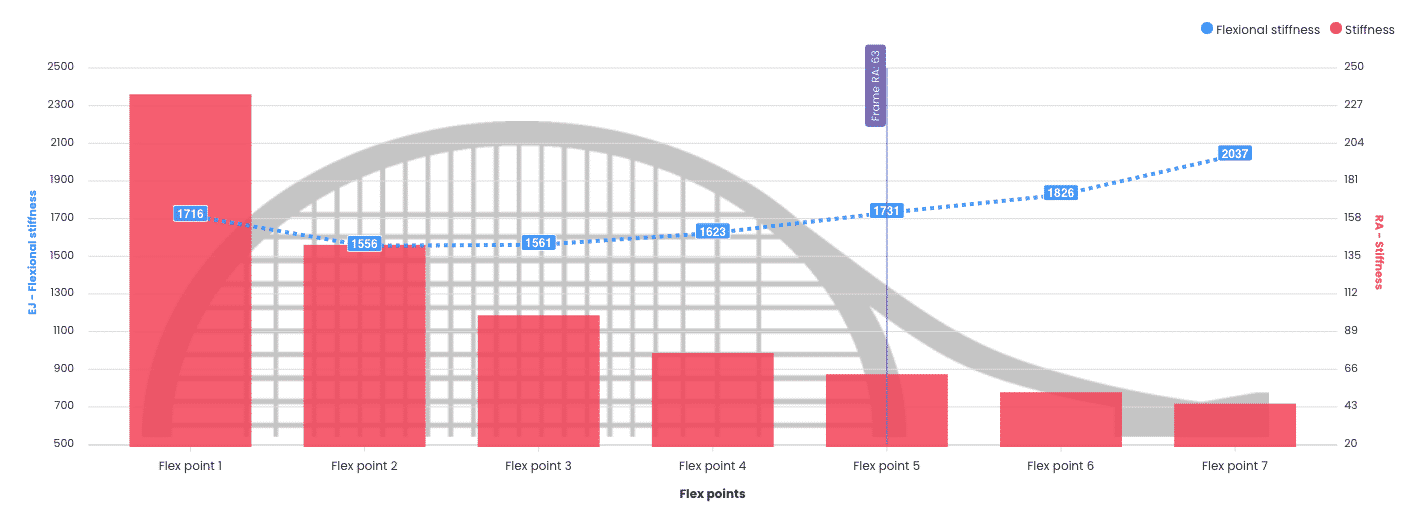
There are no bending points along the stem which appears consistent and solid in its overall flexibility and with a pattern that absurdly recalls the one of the profiled racquets rather than that of the classic semi-boxed ones. The part, obviously more flexible in general terms, is present at 9-15 of the oval.
The dynamic stiffness data is in line, which is around 62-64DRA in line with what was detected by the static data. Good dynamic response offered by the distribution of the strings, which guarantees a large and homogeneous sweet spot to guarantee good tolerance, excellent playability and propensity to use spin. The distribution of the stiffness highlights a substantial homogeneity in the behavior of the stringbed.
All laboratory analysis are available in the data sheet on Racketpedia!


